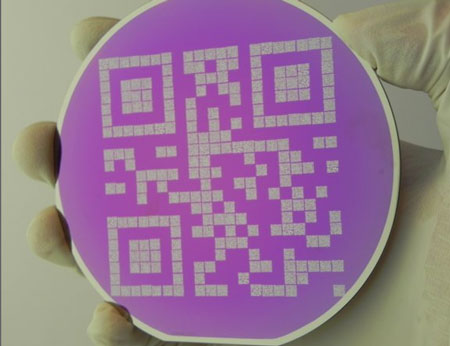| Oct 17, 2013 |
A mega to giga year storage medium can outlive the human race (w/video)
|
|
(Nanowerk News) Mankind has been storing information for thousands of years. From carvings on marble to today's magnetic data storage. Although the amount of data that can be stored has increased immensely during the past few decades, it is still difficult to actually store data for a long period. The key to successful information storage is to ensure that the information does not get lost. If we want to store information that will exist longer than mankind itself, then different requirements apply than those for a medium for daily information storage. Researcher Jeroen de Vries from the University of Twente MESA+ Institute for Nanotechnology demonstrates that it is possible to store data for extremely long periods. He will be awarded his doctorate on 17 October.
|
|
Current hard disk drives have the ability to store vast amounts of data but last roughly ten years at room temperature, because their magnetic energy barrier is low so that the information is lost after a period of time. CDs, DVDs, paper, tape, clay and tablets and stone also have a limited life. Alternatives will have to be sought if information is to be retained longer.
|
 |
| The chosen information carrier is a wafer consisting of tungsten encapsulated by silicon nitride. Tungsten was chosen because it can withstand extreme temperatures. A QR code is etched into the tungsten and is protected by the nitride. Each pixel of the large QR code contains a smaller QR code that in turn stores different information.
|
|
Archival storage for up to one billion years
|
|
It is possible to conceive of a number of scenarios why we wish to store information for a long time. "One scenario is that a disaster has devastated the earth and society must rebuild the world. Another scenario could be that we create a kind of legacy for future intelligent life that evolves on Earth or comes from other worlds. You must then think about archival storage of between one million and one billion years," according to researcher De Vries.
|
|
Optical information carrier
|
|
De Vries has developed an optical information carrier that can store information for extremely long periods of time, with each bit being written using etching techniques. The chosen information carrier is a wafer consisting of tungsten encapsulated by silicon nitride. Tungsten was chosen because it can withstand extreme temperatures. A QR code is etched into the tungsten (see picture above) and is protected by the nitride. Each pixel of the large QR code contains a smaller QR code that in turn stores different information. "In principle, we can store everything on the disc that we believe is worthwhile saving: for example, a digital image of the Mona Lisa. In this study we tested a digital copy of the chapter about this medium from my thesis", says De Vries.
|
|
Ageing test at high temperatures
|
|
In order to ensure the stability of the data, an energy barrier that separates the information from the non-information is required. In order to prove that the data is still legible after millions of years, an ageing test is required to see if the energy barriers are high enough to prevent data loss. De Vries: "According to the Arrhenius model, the medium should keep working for at least 1 million years if it is heated to a temperature of 473 Kelvin (200 degrees Celsius) and kept in the oven for an hour." After the test there was no visible degradation of the tungsten, and it was still easy to read the information. Things become complicated at higher temperatures. When heated to 713 Kelvin (440 degrees Celsius) it becomes a lot more difficult to decypher the QR codes even if the tungsten is not affected. De Vries: "A follow-up study would be to investigate whether the data carrier also can withstand higher temperatures, for example during a house fire. But if we can find a place that is very stable, such as a nuclear storage facility, then the disc itself and the data that is on it should be able to endure millions of years. ”
|
|
|
|
More information
|
|
The PhD defence of Jeroen de Vries from the Transducers Science and Technology department of the MESA+ Institute will take place in the Waaier building on the University of Twente campus on 17 October 2013 at 2.45 p.m. His thesis supervisor is Professor Miko C. Elwenspoek (Electromagnetism) from the Electrical Engineering, Mathematics and Computer Science (EEMCS) faculty. For more information, or an electronic version of the thesis ‘Energy barriers in patterned media’ you can contact Dennis Moekotte, (+31 6 18642685), the University of Twente Press department.
|

